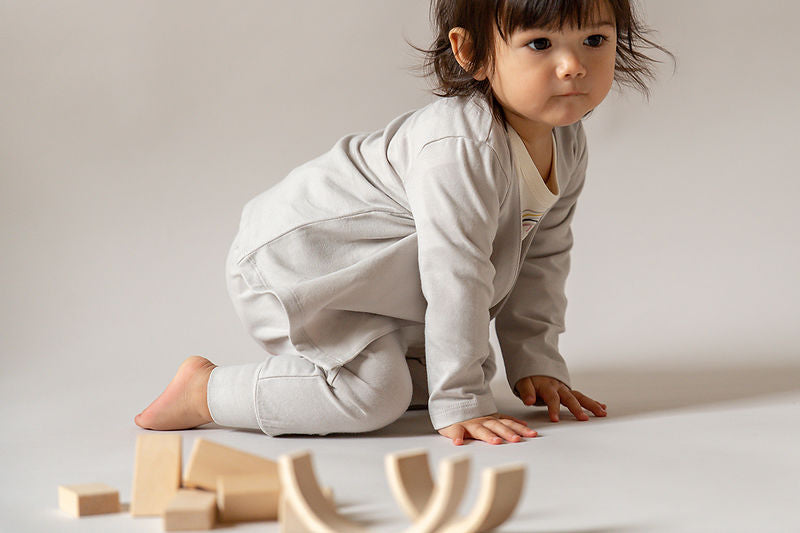Most parents have heard the term, but many still wonder ‘what are the terrible twos’ and ‘how can I help my child navigate them’? As the name suggests, the toddler stage can certainly be challenging, but knowing what to expect and being well-prepared for this period can make a huge difference for both you and your child. In this article, we’ll walk you through everything you need to know about the dreaded terrible twos. The more you know, the easier they will be. We promise!
Table of Contents
- What are the terrible twos
- Why are the twos so terrible?
- Do all children go through the terrible twos?
- Signs your child has entered the terrible twos
- Tips for managing the terrible twos
What are the terrible twos
Let’s start with the basics. Parents hear so much about this stage of life, but the term is often not clearly defined. The terrible twos refer to a developmental stage that begins at around two years of age. However, because all children develop at a slightly different pace, this stage may begin a few months before or after the 2-year mark. During this period, parents often observe a shift in their child’s behavior. Toddlers may become more fussy, impulsive and difficult to manage. This can leave parents feeling frustrated and confused. So, it’s no surprise that this stage of life ended up with a not-so-flattering nickname.

French Terry Sweatshirt - Ink Blue
Why are the twos so terrible?
Many parents are stunned at how quickly and dramatically their child’s behavior changes during this stage of life. It can be helpful to understand ‘the why’ behind this sudden shift. At around two years of age, children undergo significant developmental changes in many key areas. Ttheir physical capabilities, motor skills, cognitive ability, language and emotions are developing quickly. It’s difficult to imagine what that might feel like for your child, but for many toddlers it can be quite overwhelming and challenging.
Here are a few things that are particularly difficult for your child to navigate during this stage of life:
- Toddlers in this age group often understand more language than they’re able to express. So, although they’re taking in more information, it can still be difficult for them to communicate their emotions and needs to their parents. This can lead to a great deal of frustration.
- Your child is becoming increasingly independent as they begin to hone their motor skills, develop their cognitive abilities and become more mobile. They’re eager to explore their environment independently and are unaware of social norms or safety concerns. Learning to follow these new rules, when there’s such a strong desire to explore and be independent, can also be challenging and frustrating for your child.
- While so many exciting new developmental changes are occurring, these new skills require practice. Learning things like hand-eye coordination and balance can be tricky. Just as we get frustrated when we’re having a hard time learning something new, so do our children.

Toddler Pajama - Into The Wild
Do all children go through the terrible twos?
At this point, you might be wondering if there’s a chance you might avoid this challenging stage altogether. The answer is that it’s possible but unlikely. Honing new skills, navigating independence and learning social norms all at the same time is bound to cause some frustration. Some children will navigate the changes with fewer tantrums and meltdowns, while others might find the stage more challenging, resulting in more behavioral changes.
It’s not entirely clear why some children struggle more than others during this developmental stage, however, experts have a few ideas about why some toddlers find it easier than others. Specifically, it’s believed that having more advanced language skills can help your child navigate this stage with more ease. This is because children with advanced language skills are better at communicating their needs and emotions to their parents and other caregivers. This improved communication often makes navigating developmental changes less frustrating for both the parent and the child.
Signs your child has entered the terrible twos
Now that we’ve explored this stage in more detail, let’s discuss some of the signs parents can spot that are often indicators their child has entered the terrible twos.
- Your child is having tantrums more frequently or the tantrums have become more intense. During a tantrum, your child may cry, whine, hit, kick, bite or throw objects. A tantrum will often only last for about 5 minutes or less.
- You may also notice more oppositional behaviors from your child. As your little one becomes more independent, they may resist your help with things like getting dressed or holding hands while crossing a street. Interestingly, the opposite scenario, where your child asks for help with a task they previously wanted to complete independently, may also occur for some toddlers.
- An increase in the three Cs (crankiness, clinginess and crying) is another common sign that your little one has entered this stage.
- Mood swings are also common in children navigating this developmental stage. Your toddler may be especially sensitive and exhibit emotions that seem extreme. Remember, this isn’t always going to be a negative emotion. You may also notice that your child laughs or giggles more than usual in response to toys, games or TV shows.

Tips for managing the terrible twos
If you’ve now determined that your little one is experiencing the terrible twos, don’t worry. We’ve put together some of our most effective tips for navigating this stage. Here are a few strategies you might find helpful:
- Avoid triggers. This is a tough stage, so the more you can do to avoid getting into a tough situation with your little one in the first place, the better. Be mindful of schedules and routines, so that your little one doesn’t get over-tired or over-hungry and keep a running list of things that you know can trigger a meltdown. Do your best to avoid them when possible.
- Be patient. When toddlers start acting out, many parents begin to panic. Remember, this is a very normal developmental stage and it will pass. The more heightened you become, the more heightened your child will become. So when tantrums happen (and they will), take a deep breath and handle it as best you can. Remind yourself that it will pass in time.
- Encourage independence. One of the biggest triggers for children during this stage is that they so desperately want to flex some of their new skills. So, give them an opportunity to. Ask for help with small tasks, present them with choices throughout the day and let them feel excited and proud about becoming a ‘big kid’.
- Redirect. When a tantrum happens, prepare a few things that you can use to redirect your child. This could be a song, a toy, a new task or a change of scenery. Try out a few different things and take note of what works best for your child, so you’ll be ready when the next meltdown hits!
- Praise good behavior. The terrible twos aren’t all terrible. There will be lots of great moments too, so don’t forget to stop and appreciate those as well. When your little one masters a new skill, like learning how to transition to toddler bed, be sure to dole out lots of praise or surprise them with a special treat like some new bedding. Balancing discipline with praise will help keep things positive and productive.
Although there will definitely be some challenges ahead with your toddler, as they navigate this important developmental period, there will also be many wonderful moments. You’ll have the opportunity to observe your child as they learn, become more independent and begin to show off their personality. Remember to take it one day at a time and know that these difficult periods don’t last forever. We hopeyou feel more confident and ready to embrace all the beautiful moments you’ll share with your toddler in this next stage of life.







